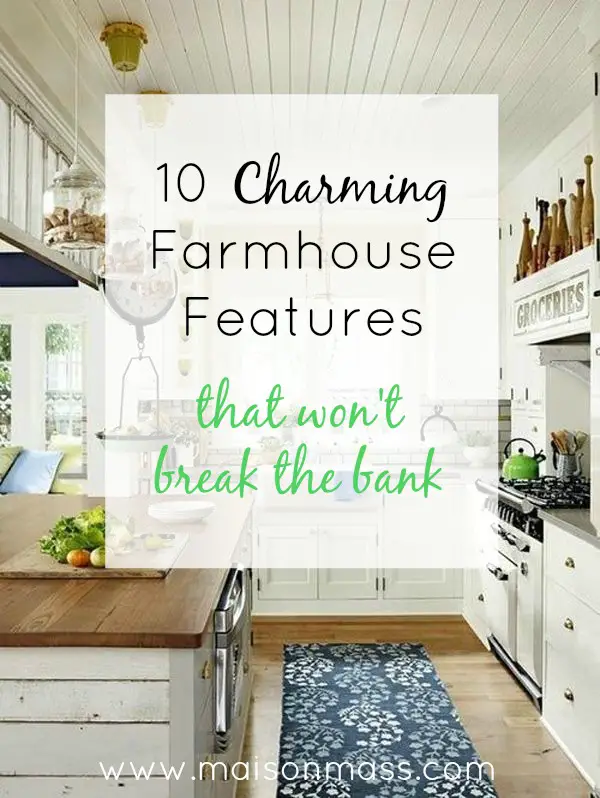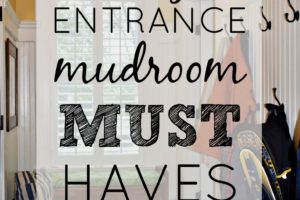Do you have the fever for the flavor of a farmhouse? You’re not alone. The fervor has swept the country. And why not? The farmhouse mood is easy and relaxed.
The historic farmhouse may, however, be a far cry from the image your mind conjures with its open floor plan and shabby chic flourishes. Farmhouses were historically small in scale and designed for practicality. As families and needs changed, small rooms were opened to allow for more family and multi-purpose space. Perhaps, our love of the farmhouse is a nod to our past, to a simpler time, when the home was considered an adjunct to the land. The wrap-around porch, still synonymous with the farmhouse, illustrates that love of the land and the timeless charm of country living.


Though my family lives in an authentic antique farmhouse, I find myself feeling out-farmhoused after only one episode of HGTV’s Fixer Upper. After a marathon, I’m packing my bags for Waco. The fact is we can’t all demo our homes and start fresh, nor would we want to, when push comes to shove. Most days, I love my home, quirky charms and all. So, what can we do in our own homes to add some of the farmhouse feel without undertaking a major renovation? These are features you can add to the home itself, without breaking the bank. The list does not include furnishings or decor suggestions, as that is a list unto itself.
1. Crown Moulding
It looks good anywhere; it compliments any room. Even the practical, no fanfare farmhouse likes its crown moulding, though it does often opt for a simpler variation. This Federal style is popular for its simple indented lines and concave shape. Crown moulding is an easy addition for even the DIY wary.


2. Baseboard
Like crown, baseboard moulding can complete a room, lending a very finished look. In contrast though, it also serves a purpose: to protect your wall while covering the joint between wall and floor. Taller ceilings call for a taller baseboard. Our ten foot ceilings are adorned by 10” baseboard. Simple is the farmhouse standard, in moulding too.


3. Beadboard Wainscoting
True to the farmhouse feel, wainscoting too was born of practicality. It dates back to the 16th century when homeowners used it inside, against their stone foundations to prevent against moisture. In the 19th century it was popularized as a method to cover water-damaged or decayed walls. Though we see it commonly used in bathrooms these days, its ease of application and warm aesthetic has people wildly wainscoting, from entryways to casual dining spaces.


4. Board and Batten
Originally an exterior treatment, it refers to the process of affixing wide vertical boards to the wall, topped by battens (thin strips of trim). Like wainscoting, board and batten has become increasingly popular and its uses variable. It is often painted with a high sheen allowing for easy cleaning and is then particularly practical in high traffic areas like entry and stairways.


5. Beams
Exposed beams or wrapped beams around door casings and ceilings really lend warmth and charm to any want-to-be farmhouse. We don’t all have barn rafters and beams to expose, but luckily, there are plenty of commercial options available for the homeowner longing for the look. Like tall ceilings, they invite your eye upward and add depth and interest to what might be an otherwise nondescript ceiling.


6. Barn Doors
When these rolled out a few years back, they were (authentically) huge, heavy and burdensome to hang. However, with demand comes greater supply and now you have a bevy of barn choices at your disposal. Certainly natural or stained wood doors would lend a farmhouse feel but if it’s more farm than you care for, you can find an array of more contemporary looks on sliding hardware, which is the popular translation for barn doors these days.



7. Planked Walls
Paneling or shiplap. Call it what you will; the look is fairly similar. Remember knotty pine paneling and how desperate your mother was to rid the house of it? Now, we’d be desperate to rediscover it with the aspiration of whitewashing it. Shiplap, like board and batten, was originally an exterior treatment for sheds and barns. So, why not bring it into the interior to create that same atmosphere? Whether you use authentic shiplap or MDF board to panel your walls, the look is comfortable and easy.


8. Farmhouse Kitchen Sink
With function always at the forefront, the farmhouse sink (or apron sink) was introduced to early homes due its ergonomic convenience. Eliminating the countertop around the sink, the user (read: women who then spent hours at the sink washing food, laundry, and utensils) needn’t lean forward and cause undue strain on the back. Now, hard living and long washing eradicated, the farmhouse sink is simply a beautiful feature offering a huge basin for modern day sink needs.


9. Clawfoot Tub
Feet fully finish any farmhouse. A clawfoot tub is always a good idea, provided your floor isn’t rotted and can withstand the weight. Remember the classic tub scene in the ‘Money Pit’ where it crashes through the floor to its dramatic end? They may not offer the modern conveniences of today’s soaking tubs but they do the job and they look great doing it.


10. Lighting
Up there with beadboard and moulding, this is one of the easier updates you can undertake on your own. There are a thousand options for lighting. Rustic wood, iron and rubbed bronze chandeliers, sconces, pendant and barn lights. For a fairly nominal cost, you can drastically alter the ambiance in any room.


So, how will you add some farmhouse character to your home? Let us know!
Lisa
Want more farmhouse inspiration? Check out these posts:
5 Fabulous Farmhouse Fireplace Decor Ideas
Fixer Upper Style Farmhouse Lighting
Subscribe to our weekly email to stay in the know and to get access to our Resource Library full of freebies (with new printables every week!) like these great farmhouse prints…












